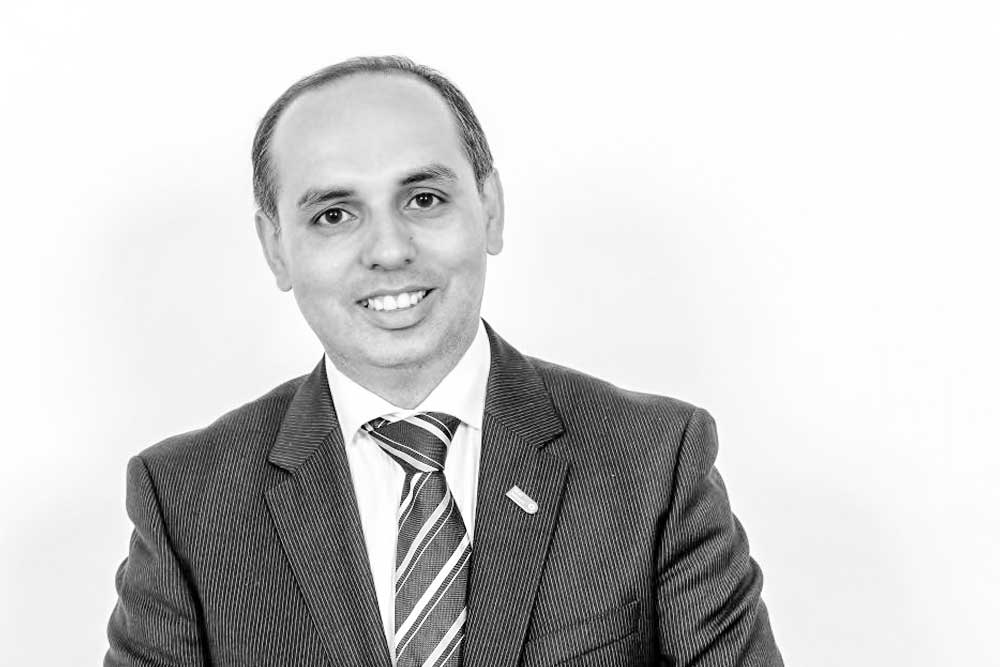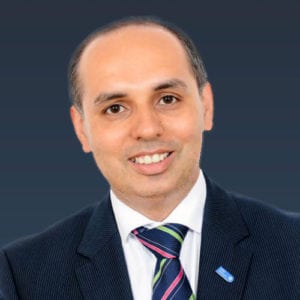GPs have been at the forefront of digital health for some time, and have much to show the rest of the NHS how it can embrace technology as part of care. EHI Award winner Dr Masood Nazir outlines some of the lessons that primary care can share with the rest of the NHS, as well as giving his views on the new breed of digital disruptors shaking up the primary care market.
The national focus for digitally-enabled healthcare is dominated by the acute hospital sector. Ten trusts have been nominated as global digital exemplars from which the rest of the country will learn, and even NHS England’s first chief clinical information officer comes from a hospital background.
Digital doctor Bob Wachter duly recognises that the use of technology in care delivery is well entrenched in the primary care sector, with nearly 100% digitisation for GP surgeries. Electronic health records in primary care support diagnosis and treatment on a daily basis, and are becoming increasingly sophisticated, for example through the use of clinical decision support and population-based risk stratification tools.
Now primary care is looking to enhance its use of technology by involving the patient through online appointment booking and, eventually, widespread patient access to records. At the forefront of this is Dr Masood Nazir, a Birmingham GP and the national clinical lead on the Patient Online programme at NHS England, and who provides clinical leadership to a team of digital clinical champions based across England.
Stressing the benefits of digital health in primary care
The Birmingham GP, who won the chief clinical information officer award for clinical informatics leadership at last month’s EHI Awards recognises that the use of technology in primary care has been successful due, in part, because of the nature of primary care. Individual doctors can see the benefits of receiving information electronically, and can influence putting in the necessary infrastructure.
“There has been a lot of investment in an infrastructure in general practice to help make the NHS paperless and paper-light. Part of the challenge in secondary care is they don’t necessarily have that. If you want to move towards a paperless environment, you have to move towards a standardised infrastructure to make that work.
“Another aspect is the processes. We used to write everything on paper notes. We saw how inefficient this was, and the delays this caused. We reviewed our processes to help us put everything we did with the patient on the computer. We also looked at how information came into the practice to a central location, and got scanned in and so was available straightaway. This helped address delays in care because paper could not be found.”
As GPs are businesses, they could more readily streamline their processes, something that Dr Nazir recognises the commercial sector “does really well” in comparison to healthcare.
“You do have to involve the whole team. In a hospital this can be more challenging. When you involve everyone, then you can make change happen.”
This includes addressing fears over job losses to technology, which for some can be very real. But this is hardly ever the case, and most often these misconceptions can be addressed by talking with those affected and reassuring them about what will happen.
“Practices may fear that if they put appointments online, they won’t have enough appointments left for patients during the day. Practices with 100% of appointments online never struggle. There’s only ever a certain proportion of patients who want to go online. We know from surveys that only 30% of people want to use online services.
“Plus there are benefits. The ‘did not attend’ rate is 30% less for people who book online, as they can find it easier to cancel appointments.”
Electronic prescriptions and home delivery mean that the elderly can have drugs delivered to their home, and so avoid having to make an unnecessary journey, especially during winter in icy conditions. This can help reduce the risk of falls, and are a clear benefit of using technology. However this is a change to current practice.
Dr Nazir notes there is the need for a culture shift for patients and the health organisations.
“For so long we have been used to queuing up or calling for an appointment. With a different mechanism, there’s a different process for each to learn.”
This culture shift is already underway. Nearly all practices now offer online services, including appointment booking, ordering of repeat prescriptions and, access to records. Patients are increasingly using online services, with 9 million patients registered and 1.2 million appointments made, and 1.4 million prescriptions ordered per month. This has increased by 70% in 12 months.
Online services had a shaky start in the early days as they did not always deliver a positive user experience. Initially, there may have been few appointments online, and the systems that patients were expected to use were less than intuitive. This may mean that patients used the system once and have not returned since.
System suppliers are now being encouraged to engage with end users to see how they could improve the interface for their patient-facing services.
“We have to improve our communication to patients about this process, as there’s not enough awareness out there. As the offering gets better, and practice get braver, they will start to see the full benefits of this. They will see less footfall, less demand on the practice, less busy phone lines, and see in the practice that this works. This in turn should see more patients offered such services,” he said.
Seeing how early pioneers are experiencing the benefits, and not experiencing the potential risks, is also helping the cause. The Patient Online Programme is helping deliver improved access to GP services, improved communication between patients and their practices, and enabling patients to make more informed decisions.
Learning the lessons from the digital disruptors
This spirit of learning extends outside the NHS. Digital disruptors such as online consultation app Babylon and the ‘care-on-demand’ service GPDQ are in some ways a threat to the existing care delivery model for primary care, despite the fact that these charge to access care.
“Any service which improves access is an opportunity for us in the NHS to learn from. For some people, these services are convenient, and that is why they pay. When it started going in London, GPDQ only had 8 visits in the first month. Now it is up to 130, I believe. So it’s a service that is growing, and we can learn lessons from this.”
This might mean greater use of apps within the NHS to deliver care, with a new tariff due to be introduced in 2017 which will see clinical commissioning groups encouraged to invest in such technology.
Masood, who is also Birmingham CrossCity clinical commissioning group clinical information lead, says that investment could also extend to home diagnostic devices; heart patients, for example, could now use mobile ECG devices to measure their heart rate instead of attending an appointment to do so.
“If you could transmit a heart reading and send it to a nurse monitoring this, to offer an appropriate response, then that would be useful.”
Targeting this investment to the right patients will be essential. So it is not just about the technology, it is also about the processes and the patient’s profile, identifying where it might best work.
“The challenge is demand management. People are focussed on providing basic services, with issues of recruitment and resources that the NHS faces. But the GP Forward View is encouraging greater use of technology.
“We will start to see these more proactively provided for particular patient profiles, such as heavy users of services.”
This could extend to greater access to online records, so that people could add health data from devices such as fitness trackers to complete their medical picture. But Nazir accepts that clinical use of data that patients generate, and how individuals record data about physical activity, are not yet aligned.
“It’s a culture shift for the patients and the organisation. We don’t prescribe these devices, so a lot of people don’t understand them. Also, the people who use fitness devices are not generally those that go to the doctor.
“But let’s say you go for a health check, you could take along evidence of how fit you are, showing number of steps, heart rate, oxygen saturation, weight – that would be great. At the moment, we expect people to bring in information on a piece of paper.
“When I’m trying to persuade a patient to change their lifestyle, having access to their record and readings is a really important part of that. But we haven’t yet demonstrated the benefits of that partnership.”
Working in partnership with patients and professionals alike
The benefit of partnership is something that the doctor is encouraging in his work with system suppliers both large and small.
“If you don’t understand the challenges of primary care, how are you going to provide technology to practices?
Nazir encourages all suppliers to get into clinical practice and talk to the people on the frontline.
“You have to get out there and talk to the teams,” he said. “General practice has been ahead of the game for a while because they bring their teams on board. There is no substitute for talking to doctors, nurses, patients, receptionists, admin staff about their daily needs.
“The system has to be designed with the user in mind. This is where we can see the most benefits.”
By stressing the benefits from those leading the use of technology, and building on the right infrastructure, general practice is now well-placed to deliver the next steps for digital health, and share what it has learnt on a wider scale.
Dr Nazir is at the forefront of change in the West Midlands, where he is chief clinical information officer for the Your Care Connected shared care record programme, which has started to successfully enable local record sharing for 1.8 million patients across Birmingham, Solihull and Sandwell.
He recognises that, in infrastructure terms, regions are ‘only as strong as their weakest link’. If one organisation still uses paper, then the practice has to keep the fax on, and the drive to being paperless and being paper-light is held back.
“Until we have the infrastructure we are not going to be able to move forward with this agenda,” he said.
The dialogue that is happening to support local digital roadmaps (LDRs) and sustainability and transformation planning is having an impact.
“People are sharing their experiences, and people are going on the journey to become paperless. People are seeing, through conversations at LDR level, how they can move away from old systems.”
This is leading to investment requests that meet the needs of organisations that may be reliant on such older systems, as well as much-needed process alignment and relationship building.
It might take one year, two years, says the Birmingham GP. But people are collaborating like never before. And that will have an impact for years to come.
Masood is passionate about creating a joined up health system for patients, which will lead to better, safer, more effective care. Empowering patients and putting them at the centre of services is the GP’s top priority, by sharing health information, using innovative technology and harnessing everyone’s best practice. His mission continues as the NHS looks to embrace the digital age.



